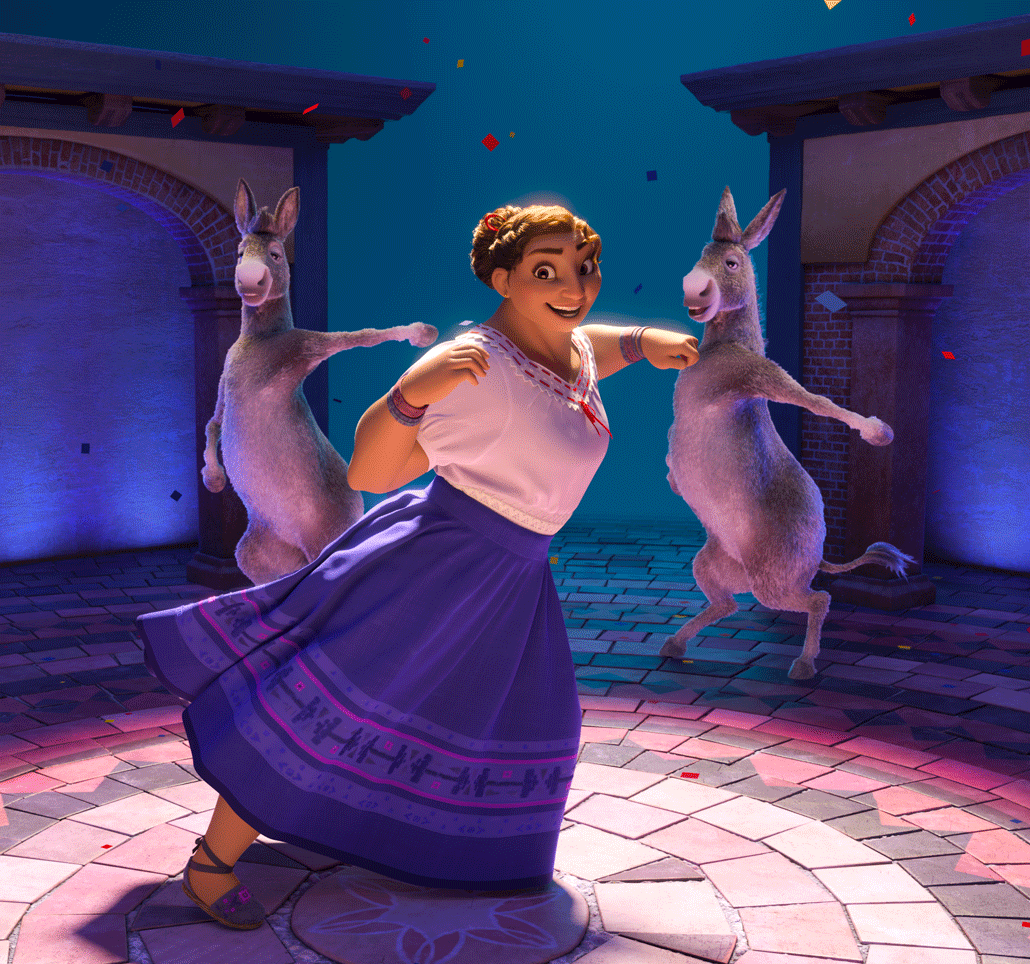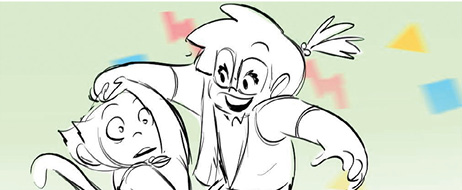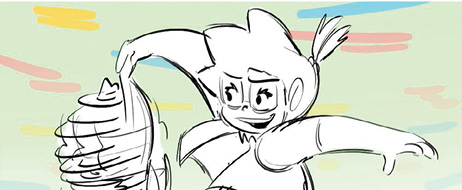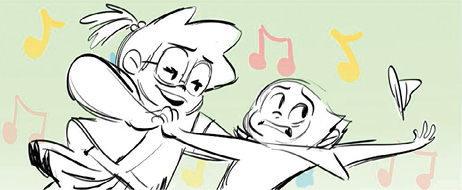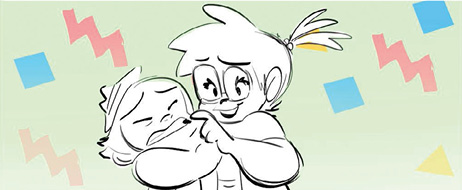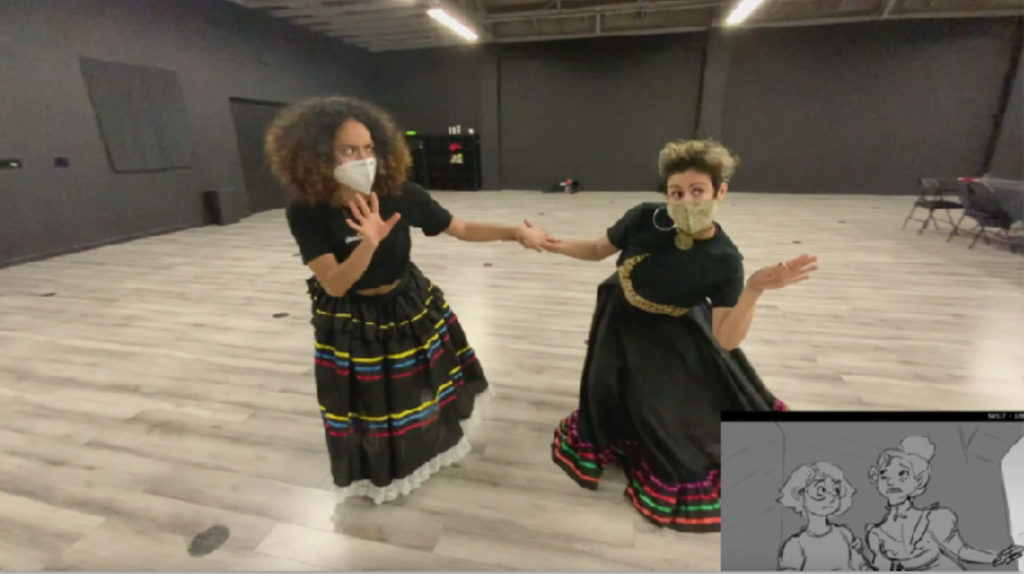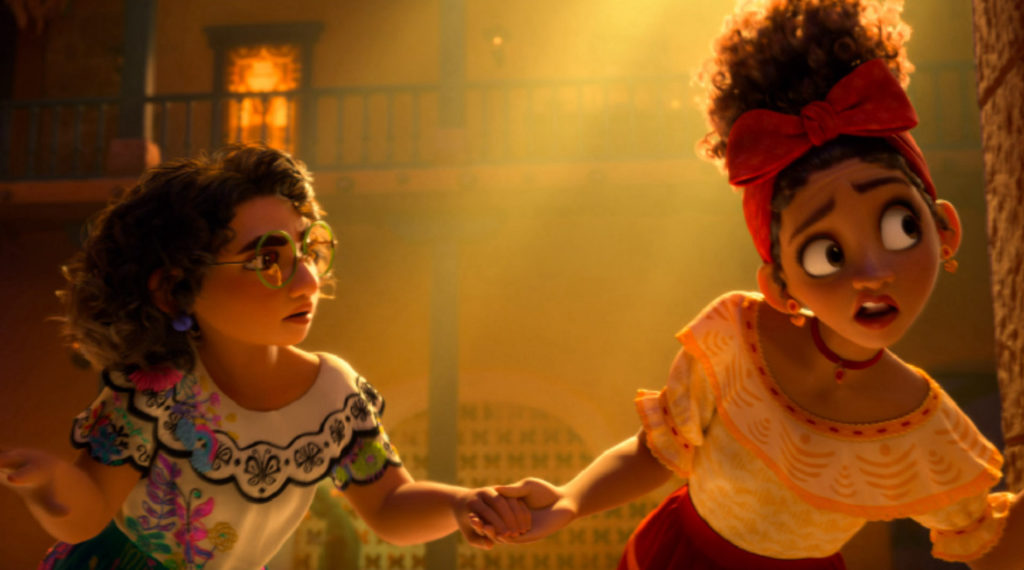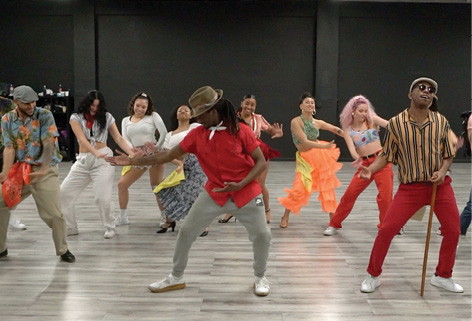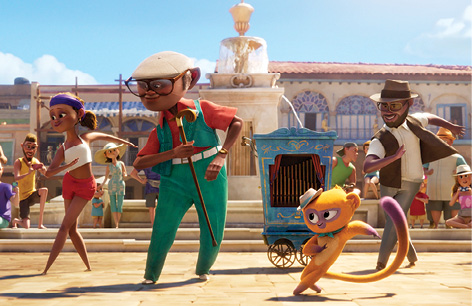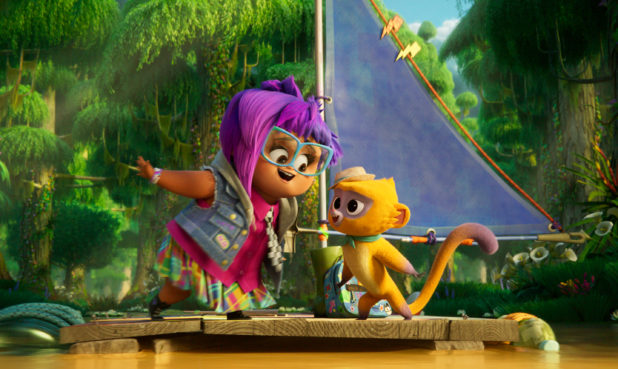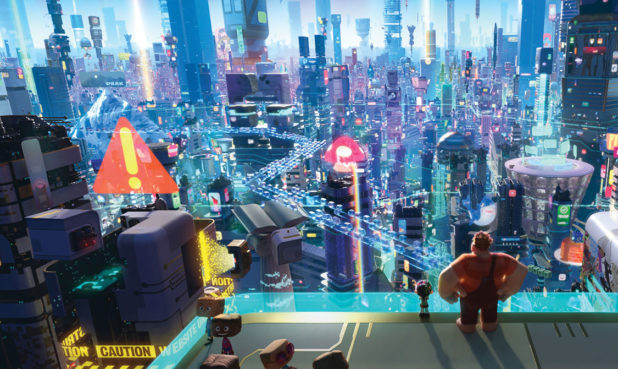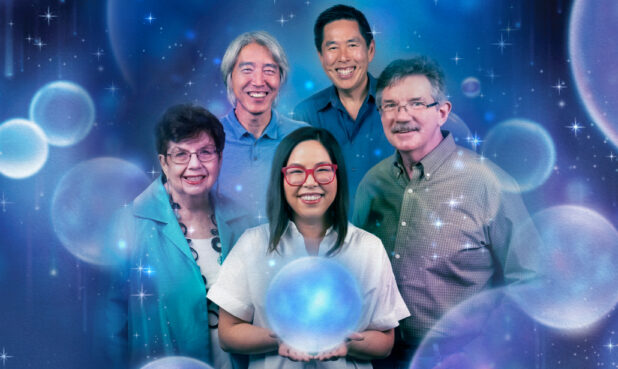
Choreographers are nothing new to the process of crafting animated musicals, but as technology advances, so does the desire to one-up every aspect of making a film. For the Disney musical Encanto, that meant having a choreography consultant on hand throughout the entire production for the first time in Disney history.
An ambitious tale of the family Madrigal, living in an enchanted place called Encanto in the mountains of Colombia, the movie leaned heavily on its choreographers because “it was a huge project to be able to tell clear stories about the 12 main characters,” says Co-Director/Co-Writer Charise Castro Smith. “Movement definitely contributed to separating them.”
“We got to fine-tune each character and their movement. Really find the particularities of their footfalls or weight transfers.”—Kai Martinez
Each Madrigal child, with the exception of central character Mirabel, has a magical trait, such as seeing the future or controlling the weather. But to differentiate them further, walking tests were done early in the process, and according to Animation Supervisor Michael Woodside, there was a strong push to integrate music into the way the characters walked.
One of the reasons for this is that in Colombia music is always on, and people are always dancing—even if a person is just crossing the kitchen to get an ingredient, says Head of Animation Kira Lehtomaki. “We wanted that rhythm to be in the bones of these characters.”
In order to make sure it was done authentically, Jamal Sims was brought in. A prolific live-action choreographer with animation credits also under his belt, he and a key member of his team, Kai Martinez, a dancer of Colombian descent who would serve as the film’s long-term reference consultant, were introduced to initial storyboards and layout. “We hadn’t done a whole lot of animation by that point,” says Lehtomaki, “so we got to explain who these characters were [and the choreographers] could start designing the dances that felt appropriate for each of them.”
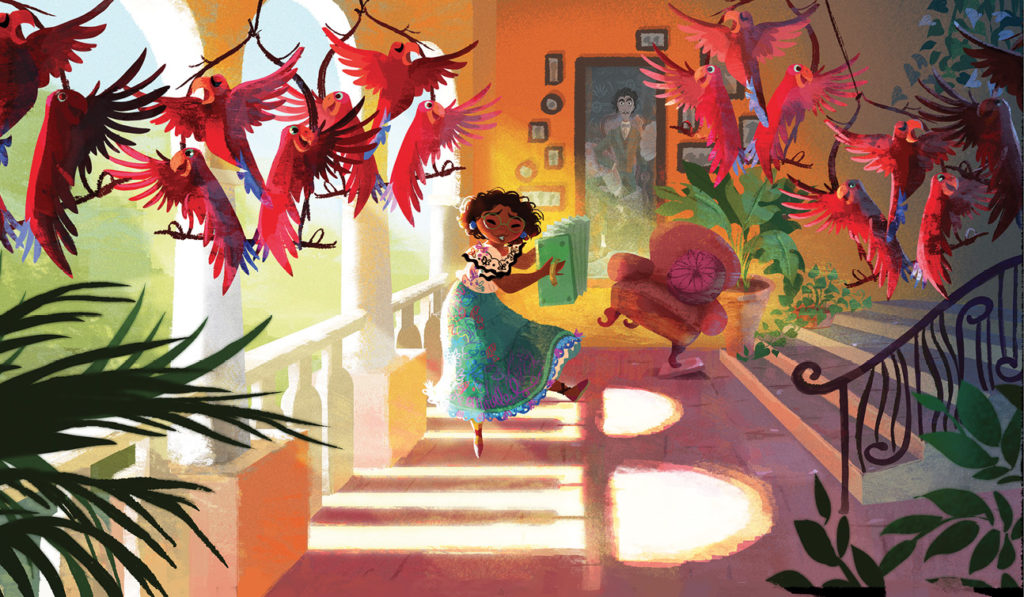
This gave the choreographers “a lot of context for us to dive into [the Madrigal] world,” says Martinez, and helped them use dance to make the most of the body shapes that the artists had designed. One example is Luisa, the middle Madrigal sister, whose magical ability is super strength. “Luisa leans heavily on reggaeton dance moves because she has great mass that we can really throw around and show the effect of the power of that,” says Woodside, referring to a mix of several genres, including reggae, hip hop, and other Caribbean and Latin American influences. Mirabel, on the other hand, is prone to mistakes, making salsa cali (a kind of double-time salsa) a perfect tool to play with her awkward nature.
GAME ON
Before the animators could get deep into their work, though, they needed choreography references. Armed with their introduction to the story and characters, Sims and his team had to bring a great deal of imagination to the big, empty studio space where they began to map out the sequences. According to Martinez, there was plenty of creative improvising, as when some of the dancers moved shoe boxes in and out to the beat of the music to simulate drawers opening and closing.
The rough draft choreography references were given to production, accompanied by Martinez who served as a guide. At first she was hesitant about what the animators could accomplish. Woodside recalls talking to her early on, and her surprise when she realized that the characters weren’t going to be too cartoony. “I was like, oh, you guys can really do this,” Martinez says. “I knew it was game on.”
One of the exciting discoveries Martinez made during production was that dancers and animators speak the same language: “We are obsessed with how things move and where they initiate from.” She remembers one of the first animated sequences she viewed and how the film’s other Head of Animation Renato dos Anjos pointed out that [eldest sister] Isabela’s hip was a little too turned out: “I was like, wow, you saw that too!”
This was the first time Lehtomaki and dos Anjos had worked so closely, so early on, and for such a long period of time with a choreographer over the course of a film—an opportunity they appreciated since Martinez “really understood the characters and understood their drive,” says dos Anjos. Martinez, in turn, loved working with the animators after the dancers had finished a reference because “we got to fine-tune each character and their movement. Really find the particularities of their footfalls or weight transfers.” At times, says Woodside, what this meant was the animators showing her their work via video and “she would just stand in her living room and dance it out.”
Going in Circles
Encanto’s collaborative process was not linear, with much of the back and forth relying on which stages the songs were in. “Until a song gets written, I don’t think we know the full scope of what even the character needs to do in that moment,” says Director Byron Howard. “So there was this great sort of circular workshopping of the characters and the story” with Lin-Manuel Miranda, who wrote the film’s eight original songs, the heads of animation, and the story team, being boarded and reboarded along the way.
A similar approach was used in Netflix’s Vivo, a musical about a kinkajou (rainforest honey bear) whose deep partnership with an elderly street musician named Andrés sends him on a mission from Havana to Miami, picking up Gabi, a free-spirited tween, along the way. According to Story Artist Carlos Romero, the directors, layout artists, story artists, and writers would gather in a room and discuss their vision for how a song should feel. Then, says Co-Director Brandon Jeffords, the team had to be willing to jump around, from the songwriter (Miranda, who also wrote the original songs for Vivo) to the choreographer to various other departments—“then back into storyboarding again, and then over to layout again … it becomes this cyclical process until you find something that’s working.”
Also important in this process was the development of the characters—something that the choreographers influenced at various points. Lehtomaki says that the first time the Encanto character of Dolores was tackled in a significant way was early on while developing the song sequence for “We Don’t Talk About Bruno.” Dolores is the family gossip with the magical power of super hearing, and “Kai thought, well, if she can hear everything, she’s going to want to be very quick and quiet about all of her movements, and so she likened her to moving like a cat.”
The team took this as a source of inspiration going forward so that whenever Dolores appears, she pops up where you least expect her. The balls of her feet touch the ground first, rather than in the usual heel-toe manner, because she’s purposefully trying to be quiet. Having the cat verbiage for Dolores was great, Woodside, says, because “as we’re looking at her on-screen, [we ask ourselves,] does she feel like a cat? If she doesn’t, then we can talk about why. This was a place where choreography definitely drove animation.”
Choreography also played a role in helping to shape the mood that sets up Vivo. For the opening musical sequence, “One of a Kind,” many different approaches were explored. “Vivo was jumping from this building to that building,” sliding down laundry lines and jumping into a soccer game, says Head of Cinematography Layout Yong Duk Jhun. But when the filmmaking team brought in choreographer Calvit Hodge to provide some live-action dance references for how the scene could unfold, “we realized that when Vivo’s jumping from building to building, we’re not really focused on Vivo and Andrés,” says Jhun. “We immediately knew, oh my God, that’s it! Those two characters dancing together—that’s the whole point of the sequence. [It’s about] how much they’ve been doing together for such a long time.”
This sequence laid the foundation for the characters’ friendship, heightening the emotional scenes to come and making them more meaningful. It also grounded the movie before it took off with more eclectic and raucous musical sequences that made creative use of 2D, 3D, and 2D/3D hybrids.
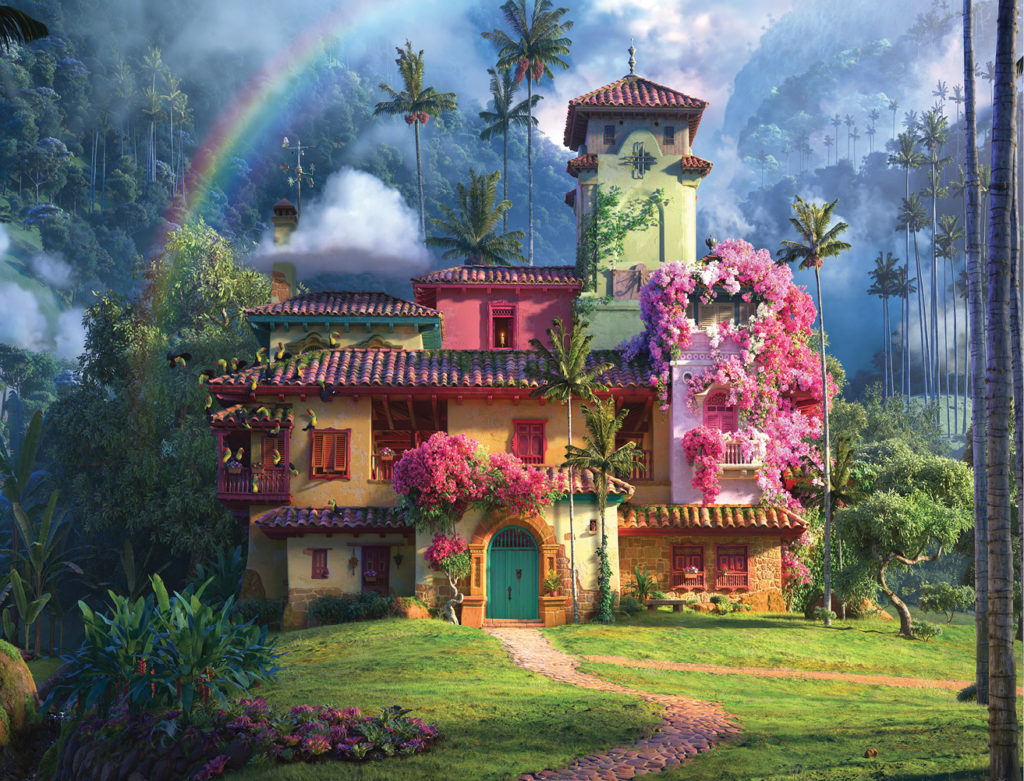
To Dance or Not to Dance
Another task before developing dance sequences is to answer the question posed by Howard: “How much of a musical is it if you’re going to use music? Is it a film with songs? From the get-go, all of us wanted Encanto to be a capital M musical.”
Next comes deciding where to put the sequences, something that isn’t always a pre-planned choice. “At some point the movie, the feel of it, the vibe of it, the structure of it says, this is a good place for music, or this is a character worthy of singing a song,” says Director/Co-Writer Jared Bush. “As we were going through the script,” Castro Smith adds, “Jared and I would say, okay, we think this is a song moment and kind of talk to Lin about it and see what he thought and trade ideas and thoughts about what the character was thinking and what we needed out of the moment. It was pretty organic.”
Once a song finds its place, explains Romero of his work on Vivo, “It was important to get visuals and storytelling that kept the flow and the timing of the song as a priority to help the song feel as connected as possible—you’re trying to connect where the non-musical parts of the film have taken us so far, and fusing that with where the song is going to take us.”
Right Angles
Filming choreography is about more than just capturing movements like the turn of a hip or the swish of a skirt. It’s also about capturing angles. Woodside felt fortunate, with production during Covid, that he was allowed to attend Encanto’s choreography sessions to film different viewpoints. This way, if the directors told the animators, “you’re going to animate Mirabel walking through a crowd,” Woodside was able to share reference choreography from various angles that had been shot for that specific sequence. The directors then chose the angles they felt worked best, and this gave the animators the confidence to know that if they used those references, they were working in the right direction.
This photography also helped the cinematographers frame the musical sequences. “All dance choreography isn’t designed to shoot at 360 degrees,” says Vivo’s Jhun. “A lot of dance choreography [should be shot] from certain angles. For example, when the dancers are moving back and forth and left to right, if you shoot from the side, it’s not going to work. You have to shoot from the front.”
Jhun appreciated that Hodge’s team helped guide him as he shot the choreography sessions “because there’s an intention of how they want to dance to show it to the audience,” he says. “It was a bit of collaboration between Calvit and his dancers and me and my camera crew to come up with [how to film] the song ‘My Own Drum.’ It was super fun.”
“…the magic of animation is picking and choosing everyone’s best elements and infusing it into the scene for the story and characters.”—Renato dos Anjos
Despite all of the efforts to achieve authenticity—from precise body movements to carefully crafted camera angles—reality is not the goal. Instead, the hoped-for result is the perception of reality as it relates to the character, according to dos Anjos. When he was watching choreographers interpret a song, he says it was tempting to just copy and paste, “but the magic of animation is picking and choosing everyone’s best elements and infusing it into the scene for the story and characters.”
“What an animator does is take liberties,” says Vivo’s Jeffords, while Encanto’s Lehtomaki adds, “we’re always going for believable over realistic.” Easier said than done? Definitely. As dos Anjos notes, dance in animation always involves more than just specific moves. It also has to incorporate everything from the rhythm on the music track to the character’s acting in the scene. Because of this, he says, “it’s one of the most challenging things an animator can do.”
